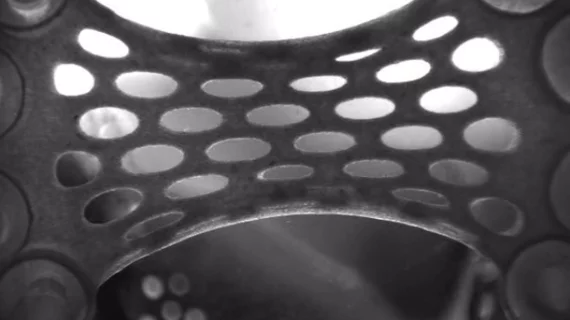Stem cell patches rejuvenate damaged heart muscle after MI
Researchers at Imperial College London have developed a sew-on heart patch that leverages stem cells to support and repair heart muscle after a heart attack—something that could dramatically lower MI survivors’ risk of future heart failure.
The thumb-sized patches—no larger than 3 centimeters by 2 centimeters—contain up to 50 million stem cells that are programmed to develop into working heart muscle, according to a release from the British Heart Foundation, which funded the research. The patches can be seen “beating” on their own before they’re implanted on a patient’s heart.
“Heart failure is a debilitating and life-changing condition with no cure, making everyday tasks incredibly difficult,” Metin Avkiran, associate medical director at the BHF, said in a statement. “If we can patch the heart up and help it heal, we could transform the outlook for these people.”
Once they’re sewn in place, the stem cell patches are meant to physically support damaged heart muscle and facilitate pumping while also releasing chemicals that stimulate heart cell repair and regeneration. Ideally, the patch will embed itself into the damaged heart muscle entirely, repairing it over time.
The patches haven’t yet been tested in humans, but recent trials in rabbits yielded favorable enough results that researchers are starting to move forward with human studies. In the latest test, the patches successfully improved rabbits’ heart function four weeks after a heart attack, with detailed heart scans revealing the animals’ left ventricles were recovering without any abnormal heart rhythms. According to the BHF, other stem cell delivery methods often suffer from an increased risk of arrhythmia.
This is far from the first time stem cells have played a part in heart studies, and the BHF said the new patches were developed in response to “somewhat disappointing” results from past stem cell trials. Though widely anticipated, studies that injected stem cells directly into damaged heart muscle failed; without restrictions the cells cleared quickly from the heart, unable to make any kind of significant difference in repair.
The new tech constrains stem cells to a 6-centimeters-squared living patch that keeps therapy targeted and effective. The patches start to beat spontaneously after three days and begin mimicking mature heart tissue within a month.
“This is a prime example of world-leading research that has the potential to mend broken hearts and transform lives around the globe,” Avkiran said. “If clinical trials can show the benefits of these heart patches in people after a heart attack it would be a great leap forward for regenerative medicine.”

